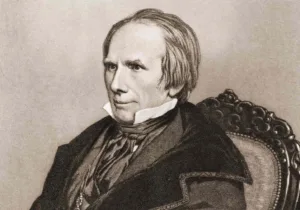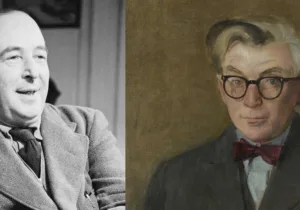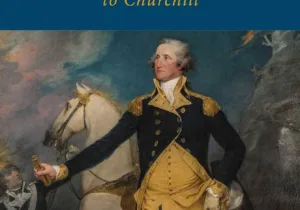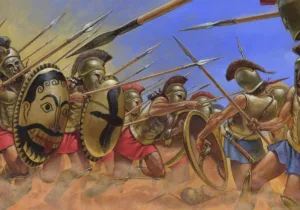In 1868, General John A. Logan of the Grand Army of the Republic, an organization composed of Union Army veterans, set May 30 aside as a day “for the purpose of strewing with flowers or otherwise decorating the graves of comrades who died in defense of their country” and “cherishing tenderly the memory of our heroic dead who made their breasts a barricade between our country and its foes.”
That proclamation marks the first official national observance of what was at that time called “Decoration Day.” This ceremony took place at Arlington National Cemetery, the burial site of more than 20,000 Union and Confederate soldiers. After World War I, the holiday encompassed the dead from all American wars, and the Uniform Monday Holiday Act of 1971 set the last Monday in May as the annual date for “Memorial Day.”
Memorial Day began as a solemn holiday encouraging grateful mourning, but today, over a century and a half after its creation, it has evolved into a casual day kicking off summer. Veteran groups cite a growing military-civilian disconnect, and the movement of the day to a Monday (which created a three-day weekend associated with recreational activities) as a reason for the cultural drift away from its intended purpose. Few Americans nowadays, particularly those under retirement age, visit monuments or participate in Memorial Day ceremonies.
In this atmosphere of apathetic patriotism, G.K. Chesterton’s “Defense of Publicity,” an essay on public monuments, might draw focus back to the purpose of Memorial Day.[1]
In 1901 Chesterton, the great journalist and witty social commentator, took on the snide criticism of his contemporaries who had begun to mock the spectacle of public monuments. Writing from the safety of London, the heart of their critique was that the “pomp” associated with veterans’ and military monuments was ridiculously exaggerated. However, Chesterton countered that this pomp was exactly right: “The mission of a great spire or statue should be to strike the spirit with a sudden sense of pride as with a thunderbolt. It should lift us with it into the empty and ennobling air.”[2] Chesterton thought that monuments should reflect the greatness of patriotic sacrifice as well as the sculptor’s passion for the greatness of what they recreate.[3]
Think about the public monument to a hero such as Admiral Nelson or the Duke of Wellington. The beauty, Chesterton perceived, of statuary over biography, another medium by which to tell the story of man, was in the sculptor’s refusal to suppress the whole of man’s existence. While in biography the humanity of the character is treated with some secrecy, in statue form it must be on full display. If it was otherwise, what would be the point of spending the time, money, and space on a statue? When we see the bronze faces of such heroes, we are reminded not just of the sacrifice of their struggle, but also of their humanity.
Chesterton further argues that the public monument is distinct, too, among other visual arts because of this tangible visibility, this baring of the human visage to the world and heavens. A painting is locked behind glass in a museum; a film is contained behind screens for sporadic viewing; a mural cannot be moved from its immediate context. In contrast, a public monument stands singularly before everyone in three dimensions outdoors in a public space. You can walk around it. You might be allowed to draw close enough to touch or almost touch it. Like the steeples of churches that draw our eyes heavenward, Chesterton thought that one should look at a public monument and be pointed to the divine because the spiritual acts of human existence—acts of valor, mercy, and virtue—should be those that are reflected publicly.
“It is not enough for a popular monument to be artistic, like a black charcoal sketch,” Chesterton wrote.
It must be striking; it must be in the highest sense of the word sensational; it must stand for humanity; it must speak for us to the stars; it must declare in the face of all the heavens that when the longest and blackest catalogue has been made of all our crimes and follies there are some things of which we men are not ashamed.[4]
At the turn of the twentieth century, Chesterton was critical of the bent toward hideous, depressing, “realistic” sculpture in his post-Victorian England. He remarked on a genre of statue then in vogue, depicting a philanthropist or politician wearing a cylindrical frock-coat, holding a scroll or garment over his arm, and standing in an oratorical attitude that was affected but not “theatrical” or majestic. From simple observation, its mechanical composition was evident to Chesterton; the builders of this man’s likeness participated in the task without enthusiasm for beauty or dignity. The bodies were assembly-line stock portraits with just a change of the face. These statutes “kicked dust in the face” of the inspiring purpose of a public monument.[5]
How does all of this apply to Memorial Day? Consider the Tomb of the Unknown Soldier at Arlington National Cemetery, the white marble sarcophagus overlooking Washington, DC, dedicated to unidentified US servicemembers who have died in the line of duty. Since April 6, 1948, the Tomb has been guarded for every hour of every day without exception. The reverence with which the sentinels carry out their duties and which they expect from visitors is a “declaration to the stars and in the face of the heavens” such as Chesterton described. It is a beautiful monument, worthy of heroes. The American president and others make a pilgrimage to this site annually to honor the sacrifice of our war dead. As Chesterton observed, this is a monument that proclaims that “of this we are not ashamed.”
But whether Arlington National Cemetery or the public monument in our own town square, the question is whether our screen-dependent public is even noticing our monuments today. Do we pause, stop, and reflect on what a statue represents so that we may pass the cultural inheritance of these monuments to our children?
Finally, we are losing the public aspect of memorializing together, through cultural rituals such as Memorial Day and Veterans Day. We are far more likely to spend the entire day at the beach rather than heading to the beach after a shared ceremony honoring the sacrifice of our parents and grandparents. Public monuments, from Trafalgar Square to Arlington National Cemetery, are appropriately “pompous” venues to soberly celebrate such sacrifice, and we should dedicate a time to contemplate the heroism the monuments reflect.
If we are to redeem Memorial Day in the American mind, visiting public memorials are good places to begin, such as those that are part of the American Battle Monuments Commission, the Marine Corps War Memorial, the Tomb of the Unknown Soldier, or the World War II Memorial.
[1] G.K. Chesterton, “A Defence of Publicity,” The Defendant (London: R. Brimley Johnson, 1901).
[2] Ibid.
[3] Ibid.
[4] Ibid.
[5] Ibid.








 Sponsor a student for Christianity & National Security 2024
Sponsor a student for Christianity & National Security 2024